Try to imagine as a parent sitting down for a hot cup of coffee without any interruption. Maybe you are watching TV, reading a book, doing some art, or planning the rest of your day. Sounds nice right? Sounds a lot like a pre-child Saturday morning to me. Don’t get me wrong, I love my baby and would never go back to the way things were before she was here, but that doesn’t mean I don’t miss certain aspects of the life before her. Fostering independent play at a young age means getting a piece of this former life, even for only moments at a time. Independent play has many benefits for both parent and child, but for me it also means sanity and uninterrupted hot coffee.
Maybe you agree and could use a little hot coffee yourself. Maybe you would love to start, but have no idea where to begin. The following are some tips to help you get started.
Here are 6 Tips to Increase Independent Play
1. Start Small
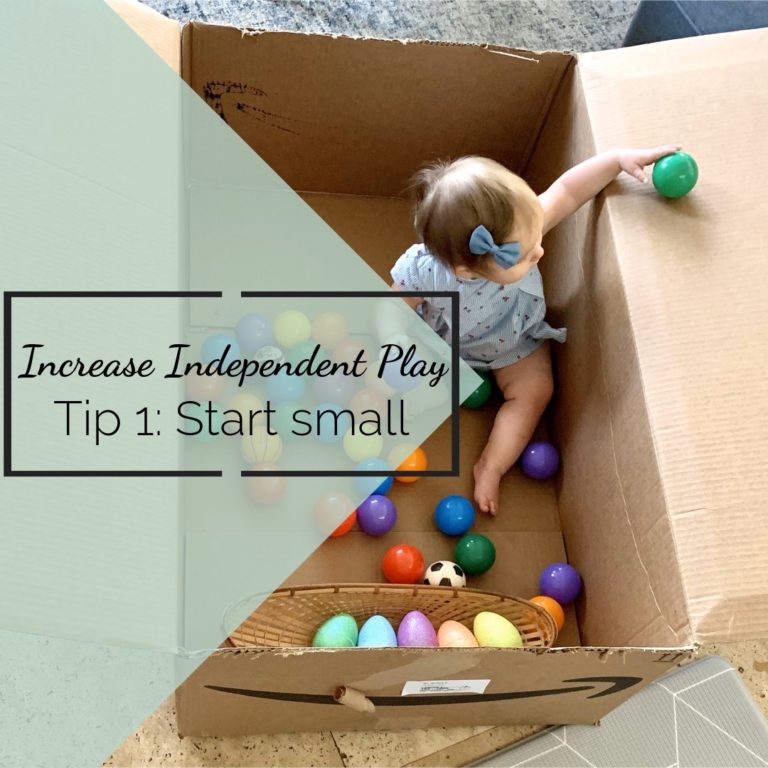
If you have never started to increase independent play time or find that your child is very needy and clingy, I would not expect your child to all of a sudden play independently for 30 minutes. I will also add here to start small AND developmentally appropriate. A very young child only has an attention span of a few minutes at a time. By 3 years of age you can expect your child to play independently for 10 minutes at a time. By School age, your child can be expected to play for 15-30 minutes. Again if your child is school age, but has never worked on independent play time, you might need to start shorter.
2. Begin with Distraction-Free One-on-One Time

Distraction free is the key for me. I will often have my phone nearby and even if I am not looking at it, I may feel the urge to capture the play of my child, check a notification, or look something up real quick. Leave your phone, your coffee, your computer, and other distractions away while you focus on your child and their play.
Think of your child like a car. You need gas to get somewhere. If you only fill up a few gallons, then you may need to stop sooner to fill back up. If you fill the tank completely, you will get farther before having to stop. Children are the same. If you are always busy or playing with them in a distracted way, their tank will not get filled up and they will need you sooner than later. Balance the time you spend with them playing at their level and expecting them to play independently. If you work from home, try to create blocks of time in your schedule for focused time with your child separate from blocks of time for work.
3. Stay Nearby
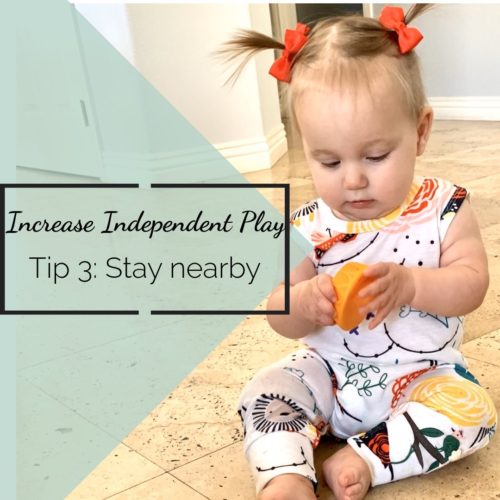
Children, just like us adults, are social beings. They feel safety and security around their parents and caregivers. So, when you are beginning to foster independent play with your little one, stay nearby. You can work or relax in their play space or you can bring the play to where you are. This might mean setting up a makeshift office in the play area or creating a play space or activity near where you are (office, kitchen, bedroom, etc.). When they sense your presence they will be more likely to engage in their play for longer periods of time.
4. Model How to Play
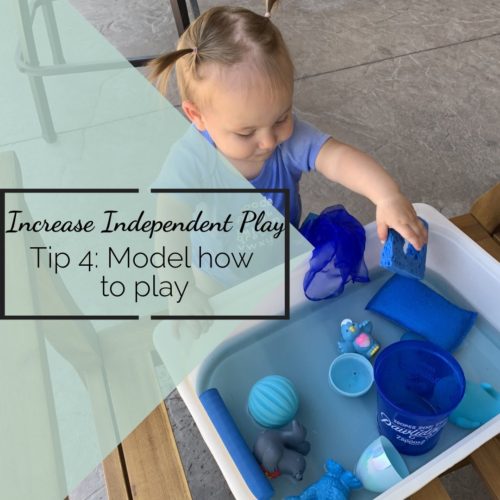
Sometimes the problem isn’t that the child doesn’t want to play by themselves, but rather they don’t know how to play with what you have offered them. This is when the one-on-one time before you go is crucial. You can spend your one-on-one time modeling how to play with the activity or toys you have presented. This does not mean lecturing or fixing, it just looks like you playing with the items alongside them or following their lead and showing an extension. For example, if you have a water table with cups, sponges, and fish toys you could watch how they are playing first and then offer some suggestions like squeezing the sponge’s water to fill the cup, putting the fish in the cup and dumping out, putting the fish on top of the sponges like boats, etc. If you model how to play they will have less questions or confusion and spend more time engaged in play.
5. Set Clear Expectations
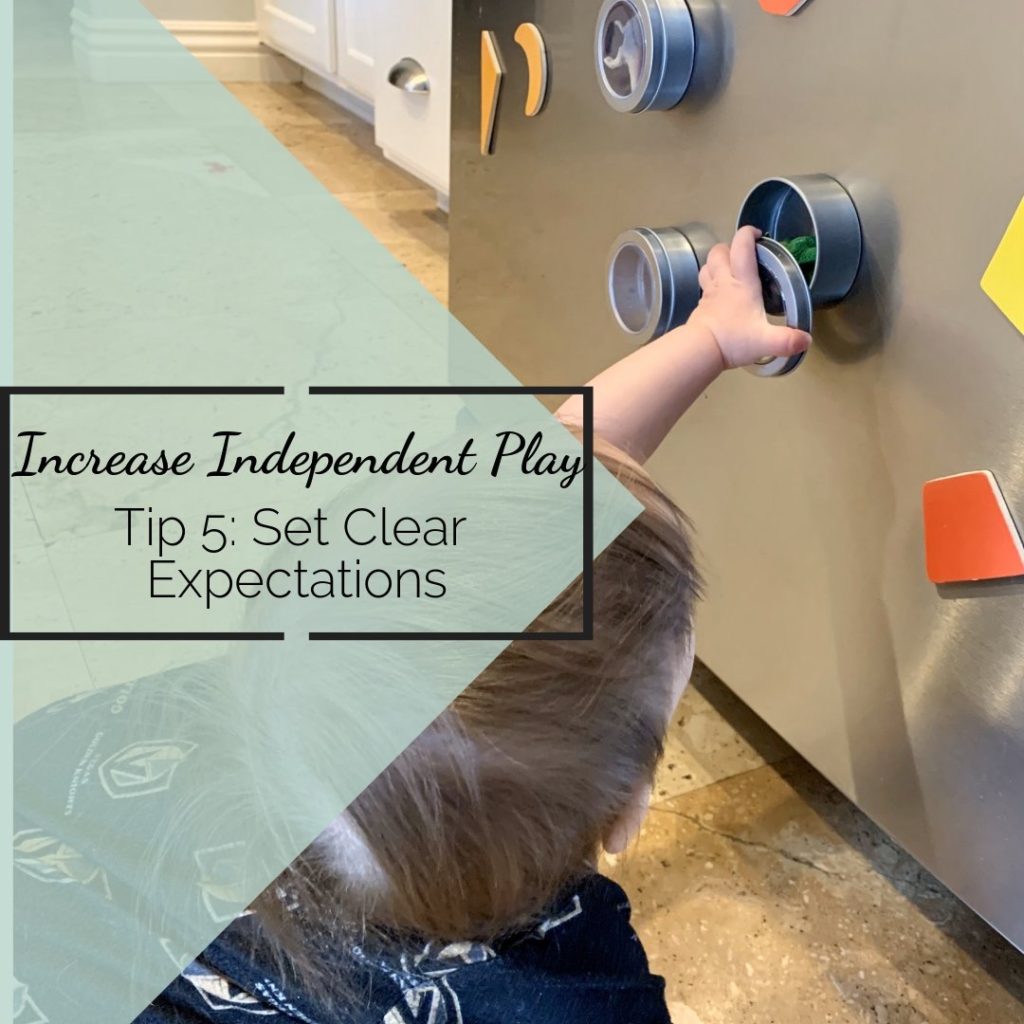
This tip follows the previous tip intentionally because they go together. Modeling and then setting clear expectations will give less confusion and less unwanted behavior. You can also be clear by stating your expectations. For example, “I will play with you again after I finish unloading the dishwasher” or “You will play with your trucks for 10 minutes and then I will come see what you have done.” Make sure with whatever expectation you have set you follow through with what you say. Set a timer if you need to (this might help you with following through and it might help them to stay focused independently for the whole time). You can also set expectations on how you wish for them to play. Volume, length of time, location, or specific rules may need to be considered. This might sound like “I need you to play quietly while I am on the phone” or “Make sure the water from the water table does not go farther than the mat.” Setting expectations in this way is not appropriate for babies or young toddlers, but is crucial for older toddlers and beyond.
6. Offer something Safe and Engaging
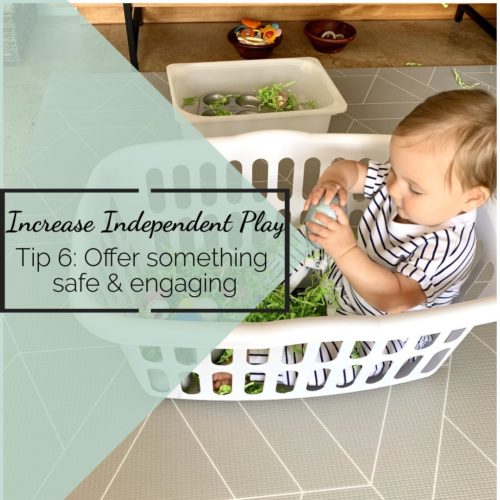
Make sure whatever toy, play space, or activity is developmentally appropriate and safe to be played with independently. Obviously no choking hazards for the little ones mouthing toys, but also check for any other potential dangers. We have one room where I can close the doors and sit in the rocking chair to finish my coffee while she plays independently because the room is set up for her.
If you need a fair amount of uninterrupted play, make sure you provide something highly engaging for your child. Consider their developmental level, needs, and interests. Choose open-ended toys as often as you can to promote longer periods of engagement because there are multiple ways to play. A puzzle for example may keep their interest for a period of time, but blocks, cars, and loose parts will keep them interested for a much longer period of time. Another thing to consider is rotating toys. When you rotate toys you keep things fresh without having to constantly buy new things.
Let me know how these tips work for you.
Share on facebook
Facebook
Share on pinterest
Pinterest
Share on email
Email
Share on print
Print
Please support my blogging efforts by sharing this post with someone who may find value in its contents.


Wonderful tips! I am really excited for your live video on Tuesday.
Thank you! I’m glad you found some value in these tips.